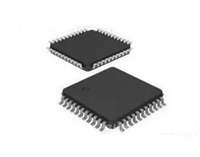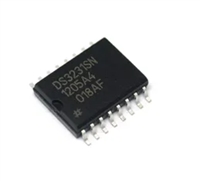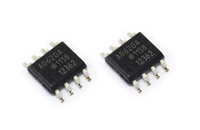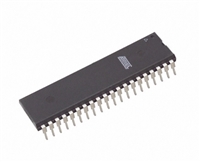Soldering Information
Rework of Chip Capacitors
Syfer MLCCs are compatible with all recognised
soldering/mounting methods for chip capacitors. A detailed
application note is available at syfer.com
Syfer recommend hot air/gas as the preferred method of
applying heat for rework. Apply even heat surrounding the
component to minimise internal thermal gradients. Soldering
irons or other techniques that apply direct heat to the chip or
surrounding area should not be used as these can result in
micro cracks being generated.
Reflow Soldering
Syfer recommend reflow soldering as the preferred method for
mounting MLCCs. Syfer MLCCs can be reflow soldered using a
reflow profile generally defined in IPC/FEDEC J-STD-020. Sn
plated termination chip capacitors are compatible with both
Minimise the rework heat duration and allow components to
cool naturally after soldering.
conventional and lead free soldering with peak temperatures of Use of Silver Loaded Epoxy Adhesives
260 to 270˚C acceptable.
Chip capacitors can be mounted to circuit boards using silver
The heating ramp rate should be such that components see a
temperature rise of 1.5 to 4˚C per second to maintain
temperature uniformity through the MLCC.
loaded adhesive provided the termination material of the
capacitor is selected to be compatible with the adhesive. This
is normally PdAg. Standard tin finishes are often not
recommended for use with silver loaded epoxies as there can
be electrical and mechanical issues with the joint integrity due
to material mismatch.
The time for which the solder is molten should be maintained
at a minimum, so as to prevent solder leaching. Extended
times above 230˚C can cause problems with oxidation of Sn
plating. Use of an inert atmosphere can help if this problem is
encountered. Palladium/Silver (Pd/Ag) terminations can be
particularly susceptible to leaching with free lead, tin rich
solders and trials are recommended for this combination.
Handling & Storage
Components should never be handled with fingers;
perspiration and skin oils can inhibit solderability and will
aggravate cleaning.
Cooling to ambient temperature should be allowed to occur
naturally, particularly if larger chip sizes are being soldered.
Natural cooling allows a gradual relaxation of thermal
mismatch stresses in the solder joints. Forced cooling should
be avoided as this can induce thermal breakage.
Chip capacitors should never be handled with metallic
instruments. Metal tweezers should never be used as these
can chip the product and leave abraded metal tracks on the
product surface. Plastic or plastic coated metal types are
readily available and recommended – these should be used
with an absolute minimum of applied pressure.
Wave Soldering
Wave soldering is generally acceptable, but the thermal
stresses caused by the wave have been shown to lead to
potential problems with larger or thicker chips. Particular care
should be taken when soldering SM chips larger than size 1210
and with a thickness greater than 1.0mm for this reason.
Incorrect storage can lead to problems for the user. Rapid
tarnishing of the terminations, with an associated degradation
of solderability, will occur if the product comes into contact
with industrial gases such as sulphur dioxide and chlorine.
Storage in free air, particularly moist or polluted air, can result
in termination oxidation.
Maximum permissible wave temperature is 270˚C for SM
chips.
The total immersion time in solder should be kept to a
minimum. It is strongly recommended that Sn/Ni plated
terminations are specified for wave soldering applications.
Packaging should not be opened until the MLCs are required
for use. If opened, the pack should be re-sealed as soon as
practicable. Alternatively, the contents could be kept in a
sealed container with an environmental control agent.
Solder Leaching
Long term storage conditions, ideally, should be temperature
controlled between -5 and +40˚C and humidity controlled
between 40% and 60% R.H.
Leaching is the term for the dissolution of silver into the solder
causing a failure of the termination system which causes
increased ESR, tan δ and open circuit faults, including
ultimately the possibility of the chip becoming detached.
Taped product should be stored out of direct sunlight, which
might promote deterioration in tape or adhesive performance.
Leaching occurs more readily with higher temperature solders
and solders with a high tin content. Pb free solders can be very
prone to leaching certain termination systems. To prevent
leaching, exercise care when choosing solder allows and
minimize both maximum temperature and dwell time with the
molten solder.
Product, stored under the conditions recommended above, in
its “as received” packaging, has a minimum shelf life of 2
years.
SM Pad Design
Plated terminations with nickel or copper anti-leaching barrier
layers are available in a range of top coat finishes to prevent
leaching occurring. These finishes also include Syfer FlexiCapTM
for improved stress resistance post soldering.
Syfer conventional 2-terminal chip capacitors can generally be
mounted using pad designs in accordance with IPC-7351,
Generic Requirements for Surface Mount Design and Land
Pattern Standards, but there are some other factors that have
been shown to reduce mechanical stress, such as reducing the
pad width to less than the chip width. In addition, the position
of the chip on the board should also be considered.
Multilayer ceramic chip with nickel or copper barrier
termination
3-terminal components are not specifically covered by IPC-
7351, but recommended pad dimensions are included in the
Syfer catalogue/website for these components.
© Knowles 2014
StandardMLCCDatasheet Issue 4 (P109801) Release Date 04/11/14
Page 2 of 6
Tel: +44 1603 723300 | Email SyferSales@knowles.com | www.knowlescapacitors.com/syfer






 TJA1050资料数据分析、引脚说明、应用示例介绍
TJA1050资料数据分析、引脚说明、应用示例介绍

 DS3231时钟芯片:参数分析、引脚说明、应用示例介绍
DS3231时钟芯片:参数分析、引脚说明、应用示例介绍

 AD620资料手册解读:引脚说明及功能介绍、参数分析
AD620资料手册解读:引脚说明及功能介绍、参数分析

 AT89C52资料手册:引脚说明、参数解读、LED流水灯控制程序示例
AT89C52资料手册:引脚说明、参数解读、LED流水灯控制程序示例
